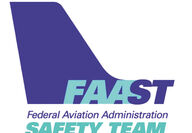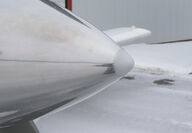Sorted by date Results 1 - 8 of 8
Much is being written about the fate of the 896 VORs that have populated the continental US since the mid-last century. Since the introduction of satellite navigation, it has become apparent that VORs have become obsolete and are destined for the chopping block. If you’ve been nodding your head in agreement so far, you’re in for a surprise. In the field of aviation, the inherent limitations of VOR navigation are well known. With the introduction of RNAV, the ability to fly DRCT-TO is a huge advantage, not to mention the ability to do so wit...

It's no wonder that students become frustrated with controlling an aircraft when there doesn't seem to be consistency between flight control inputs and aircraft response creating thoughts and comments such as, "I'm never going to get this." Learning to fly might be less onerous if students understood that flight controls have a unique purpose in each phase of flight. Applying the same inputs to ailerons, rudder and elevator, no matter which "Phase" an aircraft is in is where things become...
“Nice landing.” We sometimes hear that from passengers or fellow pilots after we greased it in with a gusty cross-wind, or pasted the mains on the numbers and made the first turnoff. However, when is the last time someone complimented you on your takeoff? Probably never. Like Rodney Dangerfield, takeoffs “get no respect.” This is unfortunate, because a well-executed takeoff requires good planning and technique to gracefully transition an aircraft from a gangly ground machine to a graceful air vehicle. When comparing the effect the wind has on...
If we wish to navigate through space with a level of precision, it is necessary to determine numbers such as: Top of Descent, Required Rate of Descent, and other information we usually have to look up or plug into our EFB or E6B. For some situations a “That-Looks-About-Right” calculation will help to determine if our decision process is on the right track or needs further scrutiny for safety or regulatory compliance. For example, if you’re at the airport and would like to get an idea how strong the wind is, a wind of 8-10 knots will regis...
It was a warm fall afternoon. Pilots were enjoying the last nice flying weather until winter made its appearance. An incoming aircraft was arriving at an uncontrolled airport from the opposite side of the traffic pattern. In the process of joining the downwind from a mid-field crosswind, and unbeknownst to him, another aircraft was also turning downwind from a prescribed crosswind. Suddenly, there was an audible gasp from the observers in the FBO, as the two aircraft executed evasive maneuvers to prevent an unpleasant outcome. The...
Groucho Marx once said; “Age is not a particularly interesting subject. Anyone can get old. All you have to do is live long enough”. It shouldn’t come as a surprise to anyone that we are not going to live forever. However, while we’re here, we want to enjoy the trip and “squeeze the last bit of juice out of the orange.” Age sneaks up on us while we’re busy living life, but taps us on the shoulder when we attempt to taxi over chocks, forget frequencies, or miss radio calls. Growing older doesn’t have to result in becoming an unsafe pilot. W... Full story

As we set our clocks back an hour each November, our thoughts shift toward coping with Old Man Winter's impending visit, and the best ways to cope without hibernating for five months. For those that choose to remain current and proficient, the following tips will help endure the season: Be Prepared When planning your flight, be sure all elements are covered such as: Weather - The night before the flight, obtain a standard weather briefing. Knowing what to expect in the form of frost or snow the... Full story
You want to fly a more challenging (up or down) aircraft than the one you currently wear like an old pair of shoes, or you want to fly off to Salt Lake City next month when the highest terrain you have encountered in your flying career thus far is the Buffalo Ridge in western Minnesota. Where does transition training fit into this? How about on your first flight lesson? The good or bad habits we acquire during our first hours of primary training will carry forward throughout our career unless someone or some-thing intervenes to change our behav... Full story